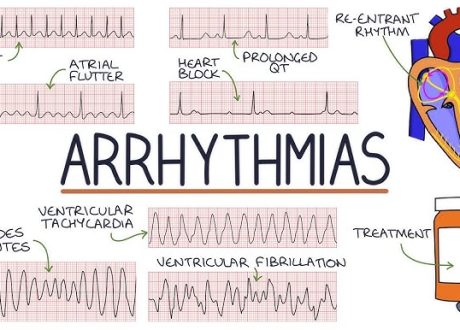Podcast: Play in new window | Download
Date: April 7th, 2022
Reference: Wong et al. Sensitivity of diffusion-weighted magnetic resonance imaging in transient global amnesia as a function of time from symptom onset. AEM April 2022
Guest Skeptic: Dr. Chris Bond is an emergency medicine physician and assistant Professor at the University of Calgary.
Case: A 65-year-old man presents to your emergency department with his wife. She tells you that he woke up normally this morning, but after breakfast he began asking the same questions repetitively and was amnestic to the answer, seemingly unable to form new memories. He remained completely awake and alert and otherwise appeared well. There was no history of recent trauma, infectious symptoms, or any other illness.
Background: Transient global amnesia (TGA) is an idiopathic acute neurological disorder that presents with sudden onset anterograde memory loss. It was first described as a syndrome in 1956 by Courjon and Guyotat and also by Bender [1,2]. Fisher and Adams formally described as TGA in 1964 [3].
The usual presentation is a patient between 50 and 70 years of age who are cognitively and neurologically intact but asking repetitive questions, unable to form new memory. Symptoms do not last very long and resolve within 24 hours. The incidence has been reported as 23.5 per 100,000 people per year [4] and is more common in people who get migraine headaches [5].
TGA is often precipitated by physical or emotional stressors, pain, the Valsalva maneuver, hot or cold-water immersion or sexual intercourse [6] Diagnosing TGA combines items put forward by Hodges and Warlow and Caplan [7-9]. This results in seven diagnostic criteria for TGA.
DIAGNOSTIC CRITERIA FOR TRANSIENT GLOBAL AMNESIA
- Attack is witnessed
- Clear-cut anterograde amnesia during the attack
- No neurologic symptoms or signs during the attack other than amnesia (no clouding of consciousness or loss of personal identity)
- No neurologic physical examination findings others than anterograde amnesia
- Memory loss is transient (resolution within 24 h)
- No epileptic features and no active epilepsy (defined as no seizure within 2 years or on antiepileptic medication)
- No recent head injury
A diagnostic algorithm has been published for patients with sudden onset of anterograde amnesia [6]. Included in this differential is transient epileptic amnesia, transient ischemic attack, stroke, metabolic disorders, psychogenic disorders, and post traumatic amnesia. The workup can include laboratory testing, EEGs, ECGs, echocardiogram and advanced neuroimaging.

CLINICAL QUESTION: WHAT IS THE SENSITIVITY OF DIFFUSION-WEIGHTED MAGNETIC RESONANCE IMAGING (DW-MRI) AS A FUNCTION OF TIME FROM SYMPTOM ONSET COMPARED TO CLINICAL DIAGNOSIS OF TGA?
Reference: Wong et al. Sensitivity of diffusion-weighted magnetic resonance imaging in transient global amnesia as a function of time from symptom onset. AEM April 2022
- Population: Adult patients 16 years of age and older with a diagnosis of TGA based on the existing clinical criteria
- Intervention: Evaluation with DW-MRI at varying time intervals post symptom onset
- Comparison: No comparison as no studies of patients without DW-MRI were included
- Outcome: Sensitivity of DW-MRI in diagnosis of TGA

Dr. Matt Wong
This is a back-to-back SGEMHOP episode. We did the March episode at the end of last month and the April episode is the first week of this month.
We are pleased to have the lead author on the show. Dr. Matthew Wong is an emergency physician and educator at Beth Israel Deaconess Medical Center, and an Assistant Professor at Harvard Medical School.
Authors’ Conclusions: “DW-MRI lesions are uncommon in patients with TGA early after symptom onset, but the sensitivity (i.e., positivity rate) of DW-MRI increases with time. Despite the limited quality of existing evidence, obtaining an early DW-MRI in patients with clinical diagnosis of TGA in the acute setting is likely a low-yield test.”
 Quality Checklist for Systematic Review Diagnostic Studies:
Quality Checklist for Systematic Review Diagnostic Studies:
- The diagnostic question is clinically relevant with an established criterion standard. Yes
- The search for studies was detailed and exhaustive. Yes
- The methodological quality of primary studies were assessed for common forms of diagnostic research bias. Yes
- The assessment of studies were reproducible. Yes
- There was low heterogeneity for estimates of sensitivity or specificity. No
- The summary diagnostic accuracy is sufficiently precise to improve upon existing clinical decision-making models. No
Results: They identified 23 studies in their search with a total of 1,688 patients who met inclusion criteria. All studies were case series of adult patients clinically diagnosed with TGA who underwent DW-MRI.
KEY RESULT: THE SENSITIVITY OF DW-MRI IN DIAGNOSING TGA INCREASES WITH TIME.

In the first 12 hours from symptom onset, sensitivity of DW-MRI is 15.6%. It improves thereafter to sensitivities between 66 and 83%, with very wide confidence intervals for all point estimates. There is also significant heterogeneity between studies.










